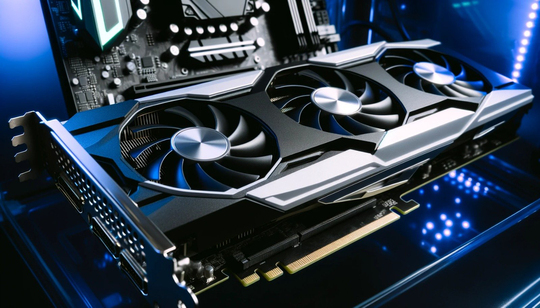Contents
- 1 Graphics Card Technologies: Next-Generation Features
- 1.1 1. NVIDIA GeForce RTX 4090 Founders Edition
- 1.2 2. AMD Radeon RX 7900 XTX
- 1.3 3. NVIDIA GeForce RTX 3080 Ti
- 1.4 4. AMD Radeon RX 6800 XT
- 1.5 5. NVIDIA GeForce RTX 3070
- 1.6 6. NVIDIA GeForce GTX 1660 Ti
- 1.7 7. AMD Radeon RX 6600 XT
- 1.8 8. NVIDIA GeForce RTX 2060 Super
- 1.9 9. palıt GeForce GTX 1050 Ti
- 1.10 10. NVIDIA GeForce RTX 4060
- 1.11 Graphics Card Comparison Table
- 2 What to Consider When Buying a Graphics Card
Graphics Card Technologies: Next-Generation Features
If you’re looking to experience competitive gaming or achieve superior performance in professional content creation, this guide is just for you. Below you’ll find detailed “Product Features and Review” sections for 10 carefully selected graphics cards designed for gamers and content creators. Each model stands out with its advanced technological features, high memory capacities, and exceptional processing power—helping you choose the right graphics card for your needs.
| Model | Memory Capacity | Manufacturer | Power Consumption |
|---|---|---|---|
| NVIDIA GeForce RTX 4090 | 24 GB GDDR6X | NVIDIA | 450W |
| AMD Radeon RX 7900 XTX | 24 GB GDDR6 | AMD | 355W |
| NVIDIA GeForce RTX 3080 Ti | 12 GB GDDR6X | NVIDIA | 350W |
| AMD Radeon RX 6800 XT | 16 GB GDDR6 | AMD | 300W |
| NVIDIA GeForce RTX 3070 | 8 GB GDDR6 | NVIDIA | 220W |
| NVIDIA GeForce GTX 1660 Ti | 6 GB GDDR5 | NVIDIA | 120W |
| AMD Radeon RX 6600 XT | 8 GB GDDR6 | AMD | 160W |
| NVIDIA GeForce RTX 2060 Super | 8 GB GDDR5 | NVIDIA | 175W |
| EVGA GeForce GTX 1050 Ti | 4 GB GDDR5 | NVIDIA | 75W |
| NVIDIA GeForce RTX 4060 | 8 GB GDDR6 | NVIDIA | 280W |
1. NVIDIA GeForce RTX 4090 Founders Edition
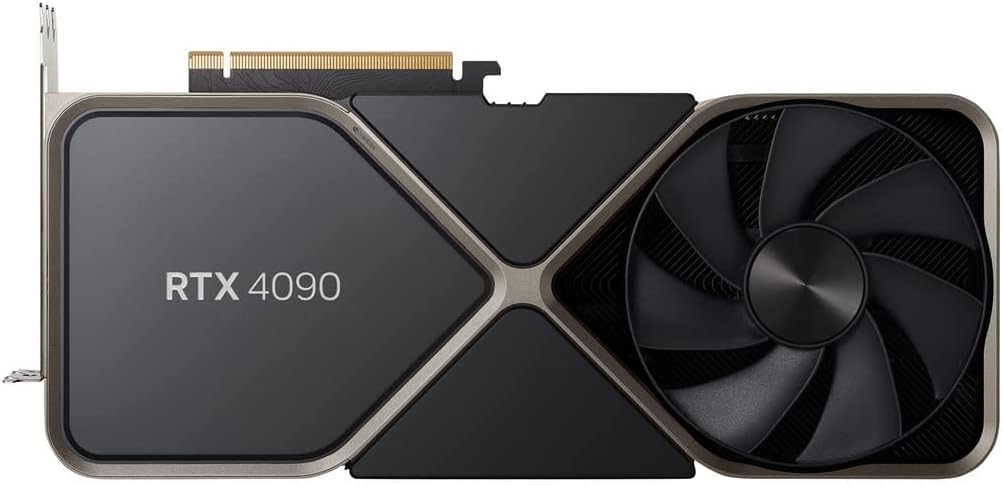
Product Features and Review
The NVIDIA GeForce RTX 4090 Founders Edition is nothing short of revolutionary for performance enthusiasts. Designed for users demanding top-tier gaming and content creation experiences, this card boasts a massive 24 GB GDDR6X memory capacity that easily handles large files and 4K rendering tasks. Its 16,384 CUDA cores elevate complex computations and parallel processing to the next level, while advanced DLSS 3.0 technology enhances visual quality by boosting frame rates. Thanks to ray tracing support, lighting and shadow effects in games become incredibly realistic.
Additionally, features such as NVIDIA’s Reflex and Shadowplay help reduce latency and effortlessly capture your gameplay moments. For professional content creators, GPU Boost and Omniverse integration offer significant advantages during intensive graphic processing and 3D modeling workflows. With a power consumption of 450W balanced by an impressive cooling system, the RTX 4090 meets—and exceeds—the expectations of gamers and content creators alike with its state-of-the-art performance.
2. AMD Radeon RX 7900 XTX
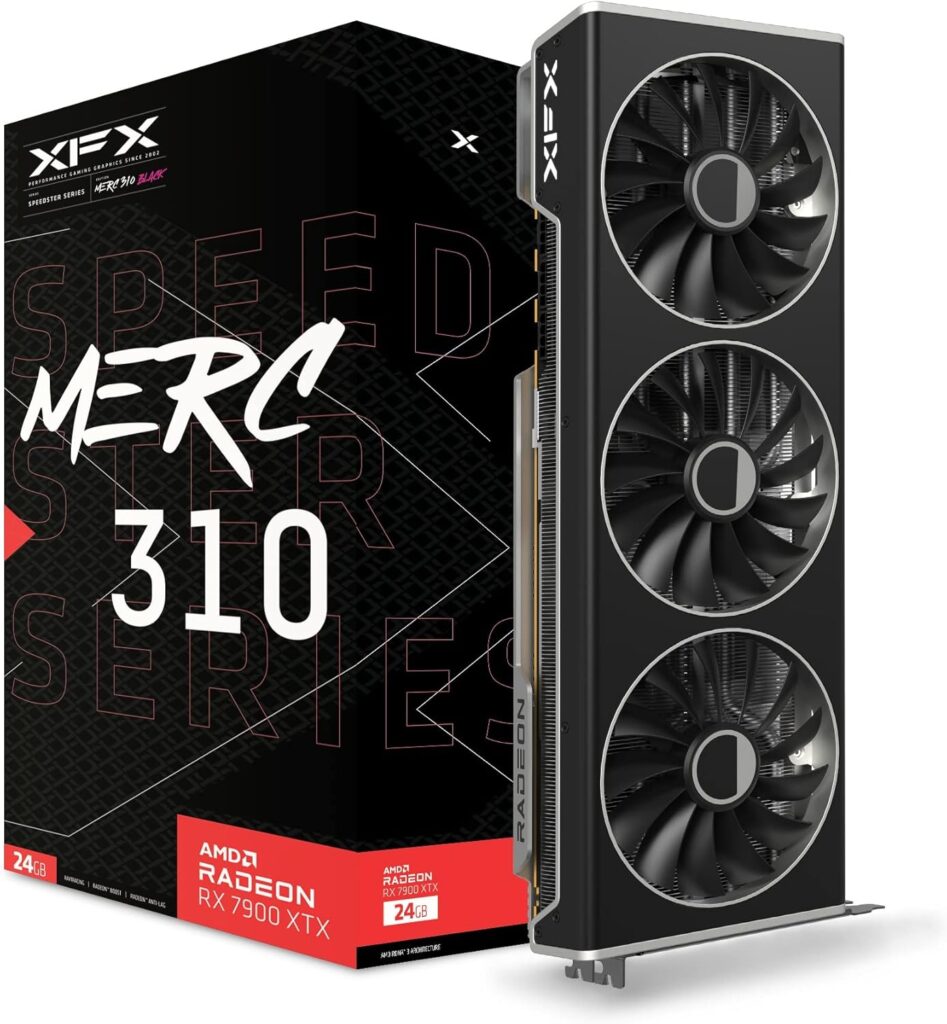
Product Features and Review
The AMD Radeon RX 7900 XTX is an ideal choice for users seeking high performance, powered by the modern RDNA 3 architecture and offering 24 GB GDDR6 memory. Optimized for 4K gaming and professional applications, this card delivers smooth performance even during intensive graphic workloads. Its advanced ray tracing capabilities combined with AMD’s FidelityFX Super Resolution (FSR) provide striking improvements in visual quality, while the high memory capacity swiftly processes large data sets.
With a power consumption of 355W supported by an efficient cooling system, the RX 7900 XTX guarantees stable performance even during prolonged gaming sessions. It offers high frame rates and an uninterrupted experience for gamers, while content creators benefit from faster video editing and 3D rendering processes. Enhanced connectivity options (DisplayPort 2.1 and HDMI 2.1) enable multi-monitor setups, and its low latency ensures a competitive gaming experience. With all these features, the AMD Radeon RX 7900 XTX stands out for its powerful and reliable performance.
3. NVIDIA GeForce RTX 3080 Ti
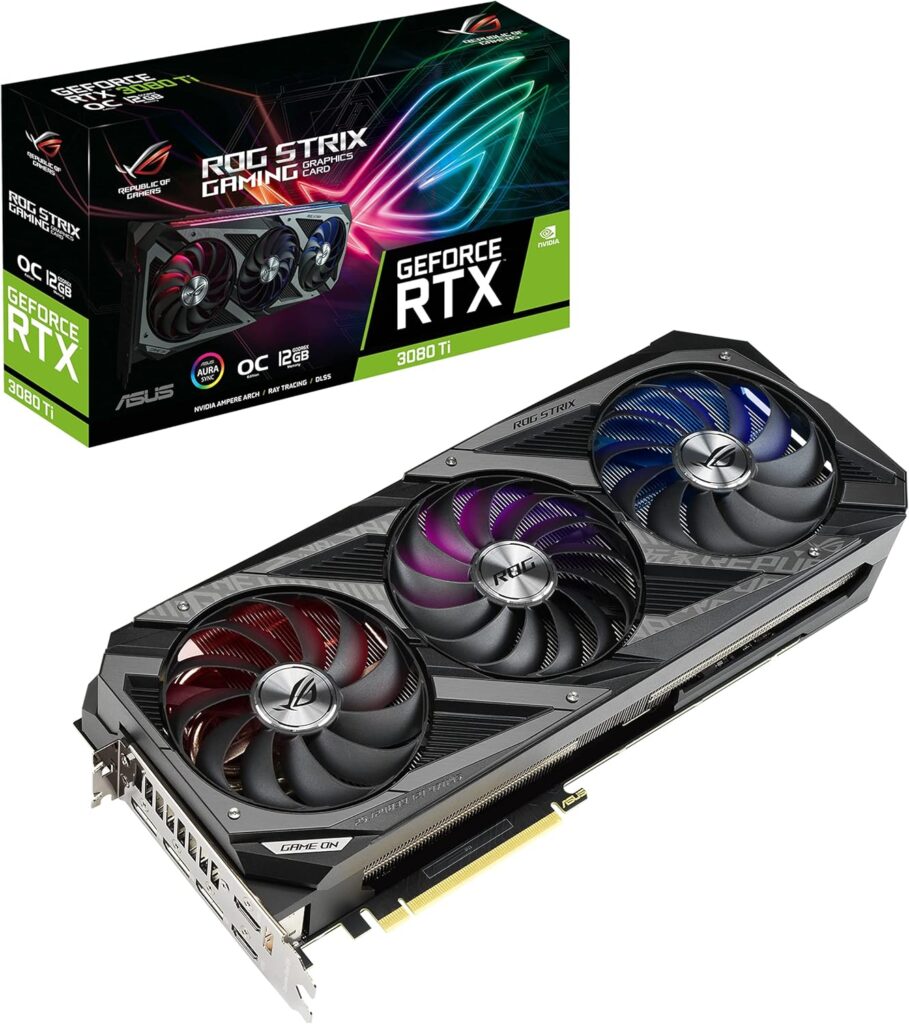
Product Features and Review
The NVIDIA GeForce RTX 3080 Ti offers balanced performance for both gamers and content creators. Its 12 GB GDDR6X memory provides ample space for high-resolution gaming and professional rendering tasks, while its 10,240 CUDA cores swiftly handle intensive graphic operations. With DLSS support, frame rates are optimized without compromising visual quality. Advanced ray tracing technology delivers realistic lighting and shadow details, and NVIDIA’s GPU Boost technology automatically increases performance when needed.
With a power consumption of 350W managed by an effective cooling solution, this card sustains high performance over extended periods. Gamers benefit from low latency and high frame rates in competitive settings, and content creators enjoy enhanced productivity in video editing and 3D modeling. In short, the RTX 3080 Ti is a versatile graphics card that stands out due to its excellent price-to-performance ratio and cutting-edge technological features.
4. AMD Radeon RX 6800 XT
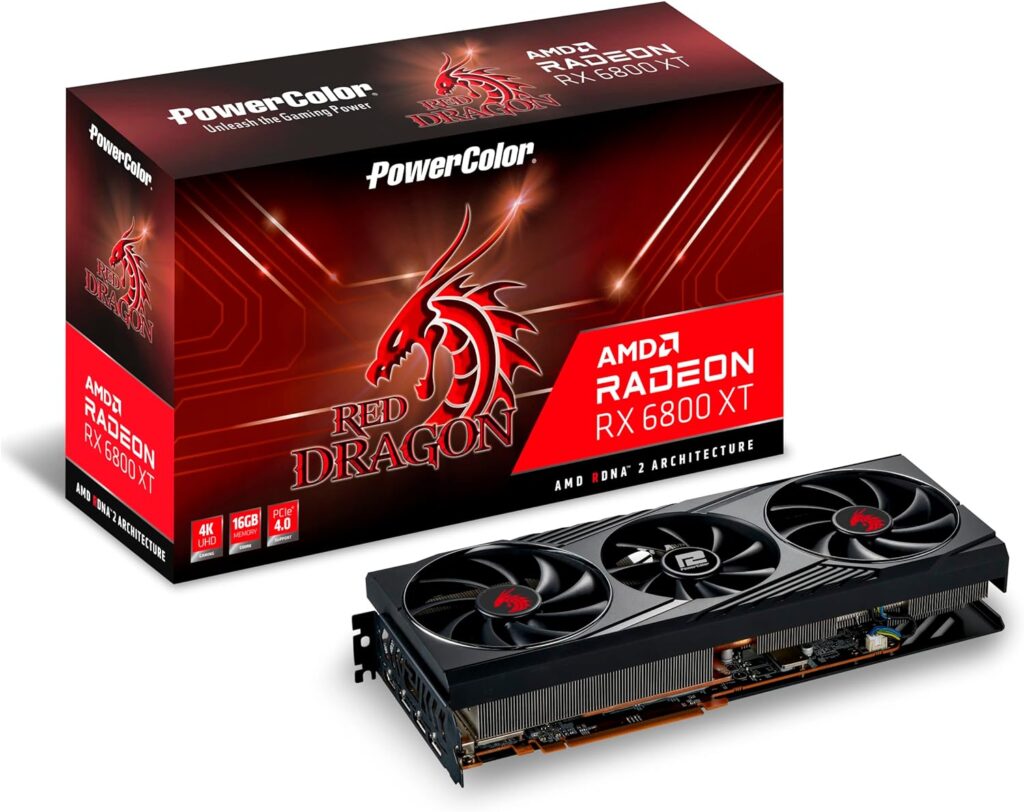
Product Features and Review
The AMD Radeon RX 6800 XT, equipped with 16 GB GDDR6 memory and built on the RDNA 2 architecture, offers solid performance for gamers and content creators alike. Designed to deliver smooth performance in 4K gaming and detail-intensive rendering, this card features advanced ray tracing capabilities that render realistic visual effects. Its 300W power consumption, coupled with an effective cooling system, ensures optimum temperature control.
The RX 6800 XT is compatible with DirectX 12 and FreeSync technologies, preventing screen tearing or lag issues. Content creators can achieve significant efficiency gains in high-resolution video editing and 3D modeling, while gamers enjoy high FPS and smooth performance for a competitive edge. With a design featuring broad cooling channels and innovative fan technology, this card also operates quietly for extended periods. Overall, the AMD Radeon RX 6800 XT is a reliable graphics card that excels in performance and advanced features, offering an excellent price-performance balance.
5. NVIDIA GeForce RTX 3070
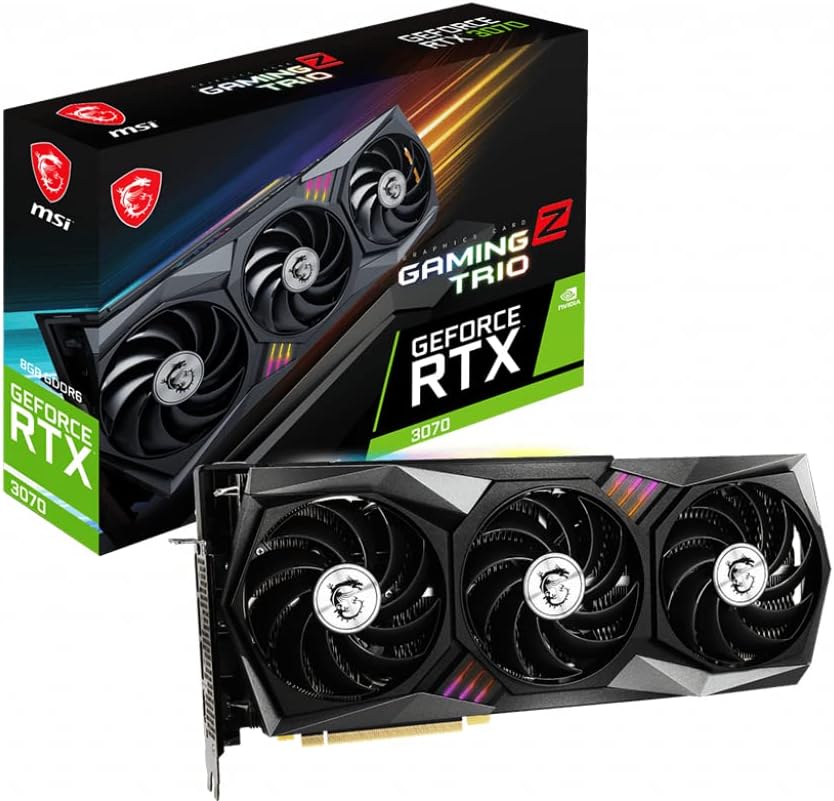
Product Features and Review
The NVIDIA GeForce RTX 3070, with its 8 GB GDDR6 memory, strikes a balance between 1440p and 4K gaming experiences—making it an ideal choice for competitive gamers and content creators. Supported by 5,888 CUDA cores, this model delivers smooth performance even during heavy graphic tasks. DLSS and ray tracing technologies emphasize details and realism in visuals.
With a power consumption of 220W, an efficient cooling system, and GPU Boost technology, the card’s performance is pushed to its peak. Gamers benefit from high frame rates and low latency, while content creators enjoy faster rendering and video editing times. G-Sync compatibility ensures seamless synchronization with monitors, preventing screen tearing. The GeForce Experience interface also simplifies driver updates and game optimizations. Despite its mid-range positioning, the RTX 3070 delivers high-end performance and boasts an excellent price-to-performance ratio.
6. NVIDIA GeForce GTX 1660 Ti
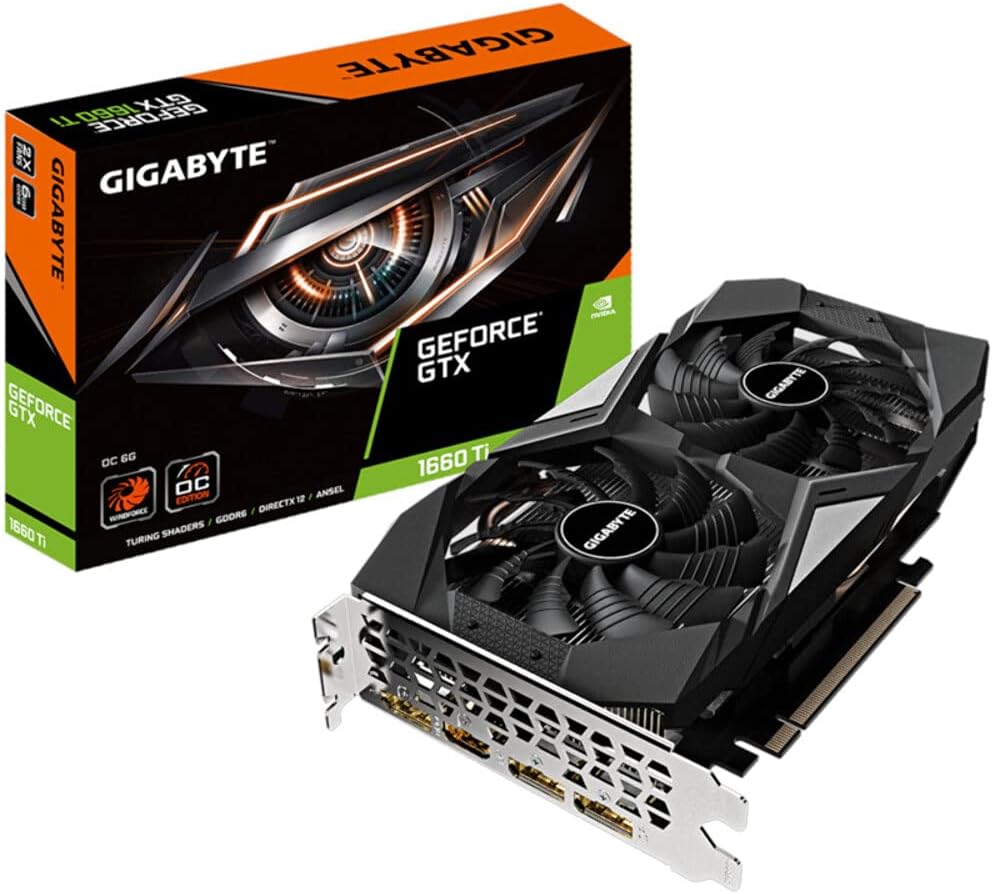
Product Features and Review
The NVIDIA GeForce GTX 1660 Ti is a budget-friendly option for gamers and content creators aiming for 1080p performance. With 6 GB GDDR5 memory and 1,536 CUDA cores, it offers stable performance with a low power consumption of 120W, ensuring lower energy costs. Although it does not support ray tracing, it provides sufficient graphic performance for most games.
Content creators can take advantage of its fast data processing for video editing and graphic design tasks. G-Sync support and optimized driver updates ensure seamless integration with your monitor, while its cooling system keeps the card cool even during extended sessions. With an impressive price-to-performance ratio, the GTX 1660 Ti is an ideal choice for entry-level gamers and amateur content creators who need reliable performance without breaking the bank.
7. AMD Radeon RX 6600 XT
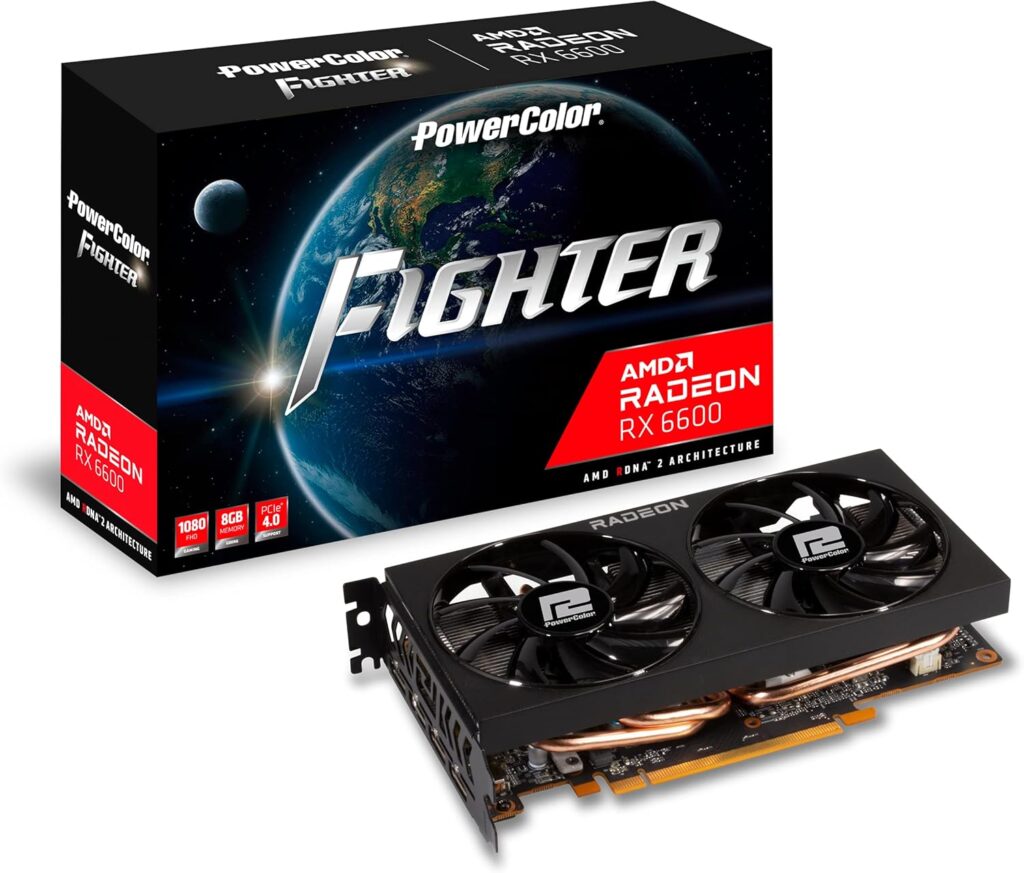
Product Features and Review
The AMD Radeon RX 6600 XT, featuring 8 GB GDDR6 memory and built on the RDNA 2 architecture, delivers high FPS for a smooth 1080p gaming experience. With a power consumption of 160W, it maintains energy efficiency while providing crisp, smooth graphics in modern games. Thanks to its advanced FreeSync support, the card synchronizes seamlessly with monitors, eliminating screen tearing and ensuring a competitive gaming experience.
Content creators benefit from its fast data processing capabilities in video editing and 3D modeling, saving valuable time. The RX 6600 XT employs innovative cooling technologies that keep it whisper-quiet even under load. As a competitively priced option, it offers a balanced solution for mid-range users. Gamers and content creators alike can enjoy both entertaining and productive experiences with this card, which stands out for its reliable processing power and modern graphics technology.
8. NVIDIA GeForce RTX 2060 Super
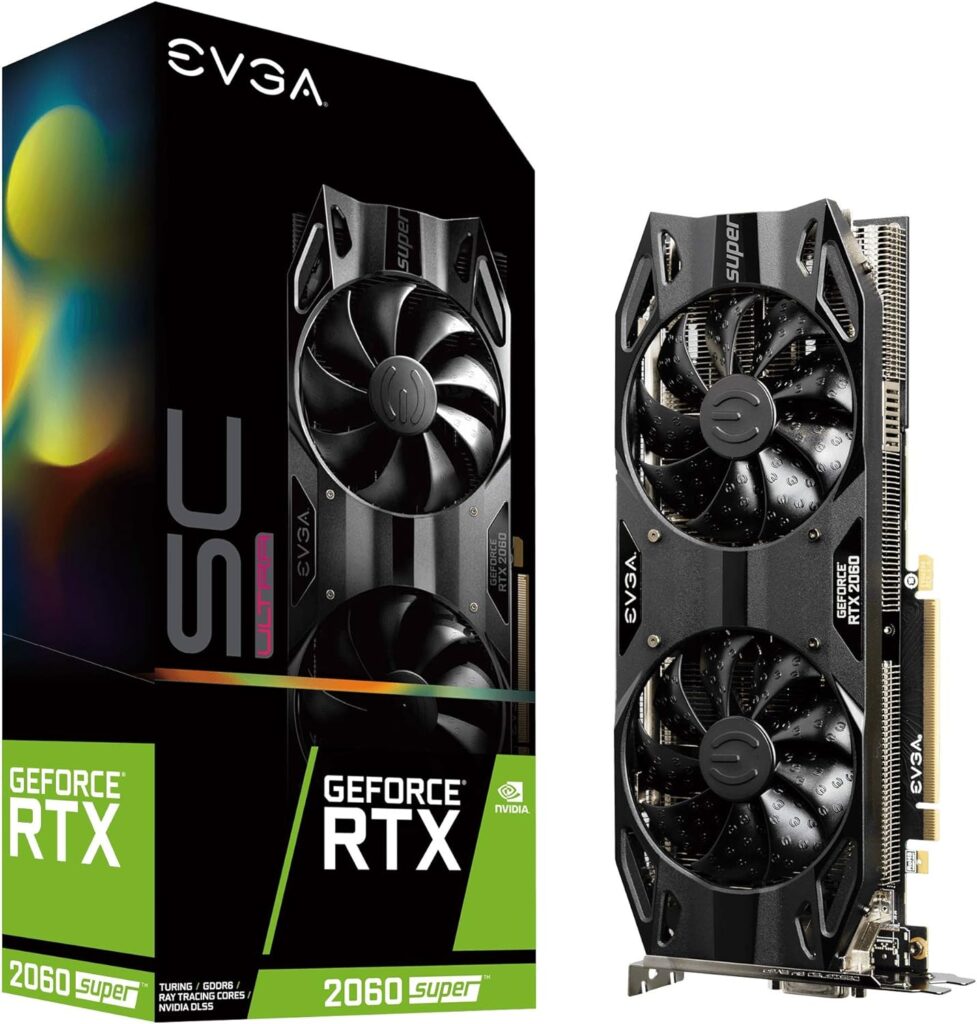
Product Features and Review
The NVIDIA GeForce RTX 2060 Super, equipped with 8 GB GDDR5 memory and 2,176 CUDA cores, delivers a seamless 1080p and 1440p gaming experience—making it an ideal option for competitive gamers and semi-professional content creators. Advanced ray tracing and DLSS technologies optimize both visual detail and frame rates, while a 175W power consumption is effectively managed by its cooling system.
This card provides smooth performance in gaming as well as stability during video editing and animation tasks. NVIDIA’s GPU Boost technology further enhances performance during intensive moments, and G-Sync compatibility ensures a harmonious connection with your monitor. With low latency and high FPS ideal for competitive gaming, the RTX 2060 Super also allows content creators to benefit greatly from its processing power during rendering and editing. Offering a balanced price-to-performance ratio, this card stands out in the mid-range segment with its advanced features and dependable performance.
9. palıt GeForce GTX 1050 Ti
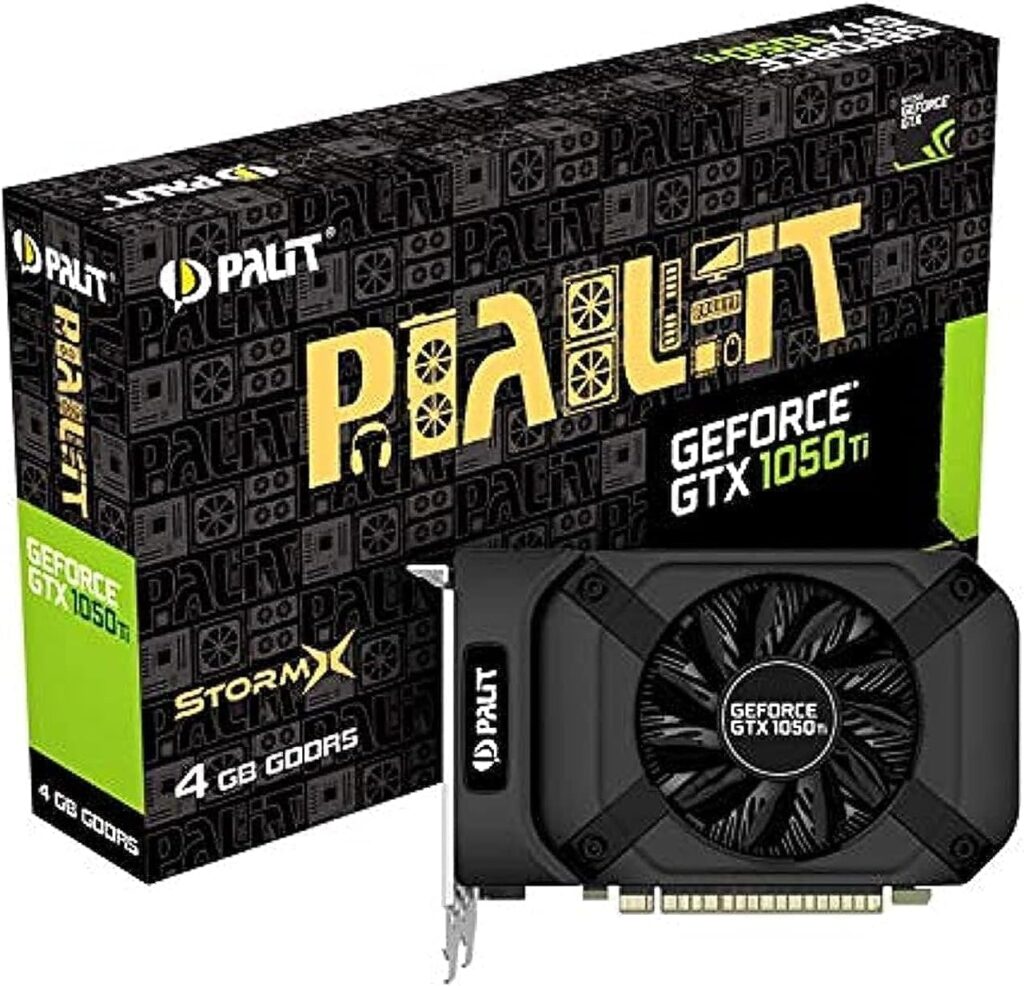
Product Features and Review
The PALIT GeForce GTX 1050 Ti, with 4 GB GDDR5 memory and 768 basic CUDA cores, is an ideal entry-level graphics card for budget-conscious gamers and light content creators. It delivers reasonable performance in 1080p gaming while consuming a mere 75W, making it energy efficient for prolonged use. Suitable for daily graphic tasks, simple rendering, and office applications, the GTX 1050 Ti stands out with its low cost.
Its easy system integration, quiet operation, and compact design allow it to fit comfortably in smaller cases. While content creators can use it for basic video editing and graphic design, those involved in intensive 3D modeling or high-resolution rendering might prefer more powerful alternatives. EVGA’s optimized drivers further boost performance, meeting the essential requirements of gamers. Overall, the GTX 1050 Ti is a reliable option for users with limited budgets who need fundamental graphics performance.
10. NVIDIA GeForce RTX 4060
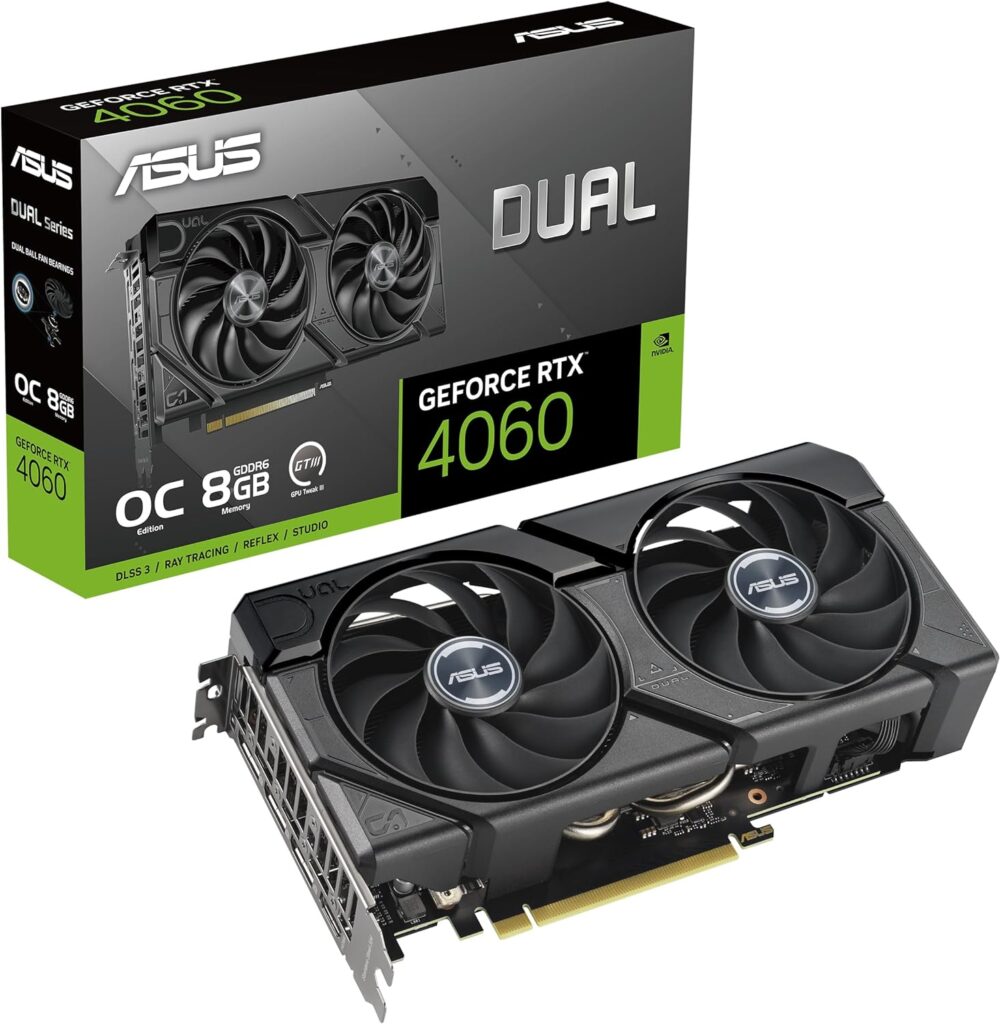
Product Features and Review
TThe NVIDIA GeForce RTX 4060 is one of NVIDIA’s latest graphics cards, designed to offer balanced performance for mid-range gamers and content creators. With its innovative technologies and excellent price-to-performance ratio, this model delivers smooth gameplay at 1080p and 1440p resolutions while providing sufficient power for video editing and 3D modeling in professional applications.
Performance and Technical Specifications
Built on NVIDIA’s latest Ampere or Ada Lovelace architecture, the RTX 4060 comes with either 8 GB or 12 GB of GDDR6 memory, ensuring the high bandwidth required by modern games and applications. Its CUDA cores—improved in number and efficiency compared to previous generations—provide enhanced parallel processing power, which translates into faster performance during intensive graphic tasks.
This graphics card supports real-time ray tracing technology, delivering more realistic lighting and shadow effects in games. Additionally, with DLSS (Deep Learning Super Sampling) support, it boosts frame rates without a significant loss in visual quality. These features provide a considerable advantage in competitive gaming as well as in professional content creation workflows.
Graphics Card Comparison Table
This guide presents a detailed look at various graphics cards tailored for gamers and content creators. Each model is analyzed with its advanced technology, memory capacity, and processing power, addressing different usage scenarios. Whether you’re after a competitive gaming edge or high-performance content creation, this list will help you find the perfect graphics card to meet your needs.
What to Consider When Buying a Graphics Card
When buying a graphics card, there are several important factors to consider:
Performance and Processing Power
CUDA/Stream Cores: The number of cores (in NVIDIA or AMD cards) directly affects parallel processing capabilities and overall performance.
Clock Speed: A higher clock speed often translates to better performance during demanding tasks.
Memory Capacity and Type
VRAM (Video RAM): Sufficient VRAM is crucial for gaming, 3D modeling, and video editing. Options typically range from 4GB to 16GB or more, depending on your needs.
Memory Type: Different memory types (such as GDDR5, GDDR6, or GDDR6X) offer varying levels of bandwidth and speed.
Cooling and Thermal Management
Effective cooling solutions (such as fans and heat pipes) are essential to prevent overheating during intensive usage, ensuring stable performance over time.
Power Consumption and PSU Compatibility
Check the card’s power consumption (measured in watts) and ensure your power supply unit (PSU) can handle the additional load. Also, verify that the card’s power connectors (6-pin, 8-pin, etc.) are compatible with your PSU.
Connectivity Options
Consider the available output ports (HDMI, DisplayPort, DVI) and whether they meet your requirements for connecting multiple monitors or high-resolution displays.
Compatibility and Size
Ensure the graphics card physically fits into your case and is compatible with your motherboard’s PCIe slot. Measure the card’s dimensions if you have a smaller case.
Features and Technologies
Look for advanced features such as ray tracing, DLSS/FSR, and VR support, which can enhance gaming and creative workflows.
Software support, including regular driver updates and overclocking options, is also important.
Price-to-Performance Ratio
Balance your budget with the performance you need. Evaluate whether the card provides the best value for its price in terms of features and overall performance.
Intended Use
Consider your primary use case—whether it’s gaming, professional content creation, or general use. Different tasks may require different levels of performance and features.
By keeping these factors in mind, you can choose a graphics card that best meets your performance needs, compatibility requirements, and budget constraints.

